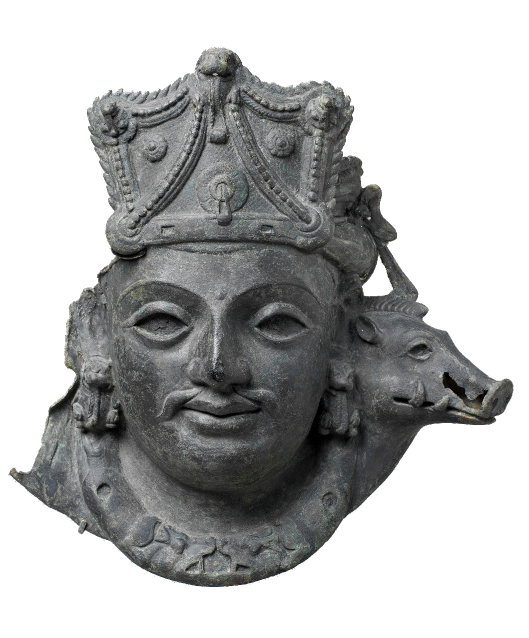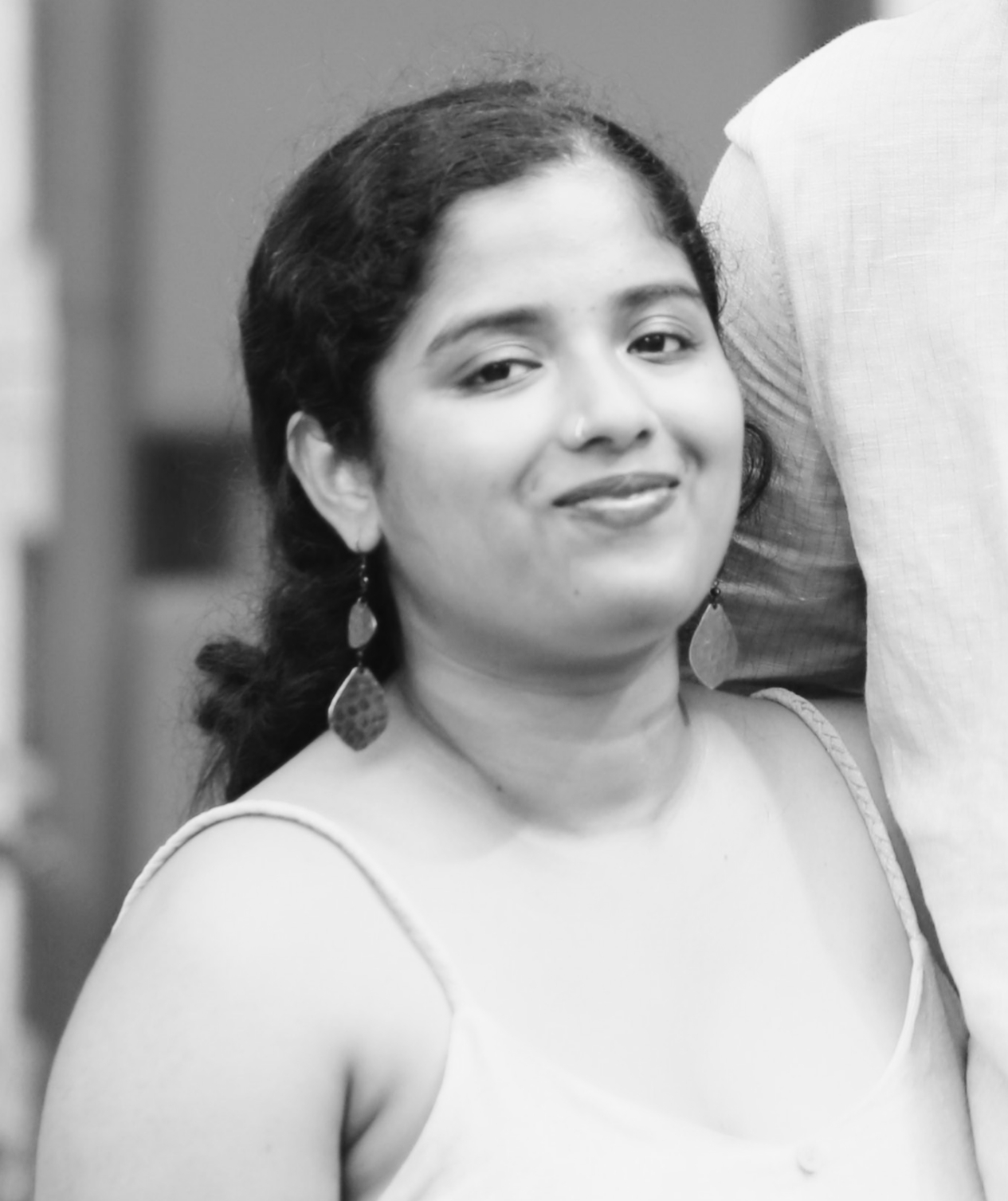PERSPECTIVES
The Indian Kodak Girl’s Domestic Turn
“Take a Kodak with You,” says a 1920 advertisement slogan for the world-famous brand, popular with amateur photographers of the time. The illustration for it depicts a European woman with stylishly short hair. Dressed in a distinctive blue-and-white striped dress, fluttering in the breeze, she stands on the edge of a cliff overlooking the sea. As her eyes take in the sights, she is poised to make some holiday memories, her trusty camera slung over her shoulder. She is the Kodak Girl.
Introduced as a mascot figure in 1893 for the brand founded by George Eastman, she epitomises the “fashionable, young, vibrant, and independent woman” at the turn of the 19th century. In the company’s ads, she is depicted as a seasoned amateur photographer relishing her solo travels in far off lands with no family in sight. Through her, Kodak promoted photography as an effortless and enjoyable leisure activity, particularly for women smitten by wanderlust and a desire for life away from the domestic humdrum. These would have been the kind of advertisements that European women saw and identified with when they set sail for the shores of “exotic” colonies.
These ads also appeared in Kodak’s Indian print campaigns from 1920 to 1947, under the British Raj, where the Kodak Girl appears as a Western traveller navigating India — her gaze exoticising the landscape and people she photographs. Meanwhile, the actual inhabitants of the land were not seen as worth advertising to at this point.
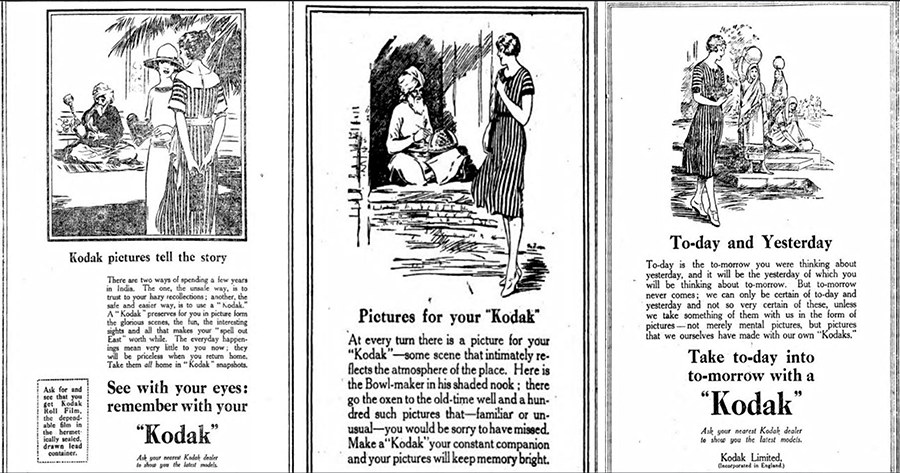
But all that changed after India’s independence. By the 1950s, the imagery of ads placed in regional Indian newspapers, periodicals, and magazines saw a dramatic transformation. To capture the new market, the Western Kodak Girl was reimagined as Indian. Clad in a striped sari, she sported key cultural markers of local femininity like the bindi, bangles and jasmine flowers. After the formation of linguistic states in India by 1956, Kodak also began incorporating vernacular languages in regional ads, moving beyond the exclusive use of English.
Not only was there a striking change in attire, but also a paradigm shift around the representation of womanhood in Kodak’s advertisements. Instead of featuring the Western visitor casually documenting Indian landscapes, the new ads foregrounded the “New Indian Woman.” This archetypal figure, as discussed by post-colonial scholar Partha Chatterjee, represented the idealised version of Indian womanhood that suited the carefully crafted aims of nation-building and nationalism at the time. Pitting the East’s spiritual and cultural superiority against the West’s material superiority, discourses in the newly independent India often revolved around how to preserve “inner” cultural values at home (ghar), while adopting “outer” Western ideas to manage practical matters outside the home (bahir).
As India’s economic and political landscape shifted, the “New Indian Woman,” expected to balance tradition with modernity, was looked upon as integral to the project of nation building.
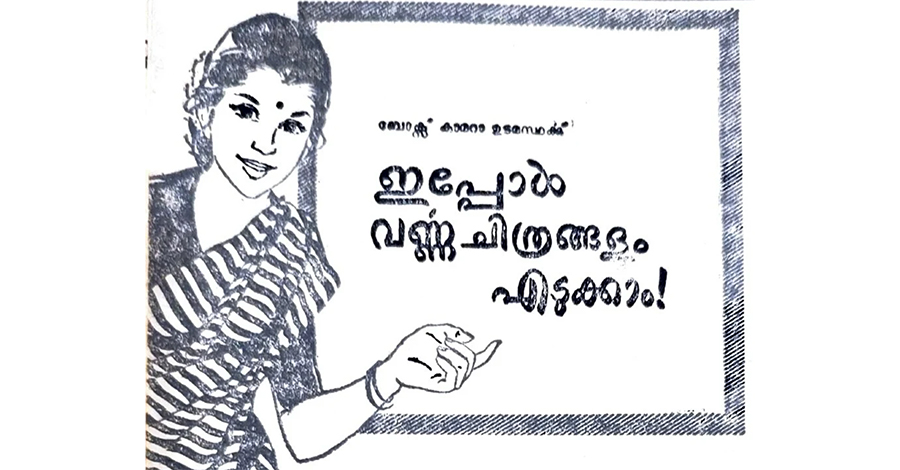
Neither realistic nor accurate in representation, such visual imaginings are part of a constructed and ritualised practice of seeing, which Christopher Pinney calls “Hindu scopic regimes” in India. According to Pinney, visual representations were shaped by Hindu ways of seeing, and determined how subjects were imagined, portrayed, and interpreted in the public domain. At the time, these representations ranged from Raja Ravi Varma’s mythological prints to the portrayal of women in Hindi cinema with pan-Indian appeal in films like Mother India (1957).
Kodak deployed this idealised imaginings of Indian womanhood as a medium for their own messaging about technology, photography, and modernity. But the Indian Kodak Girl’s modernity was not defined by travel or cosmopolitan detachment. Instead, her modernity was defined by her willingness to engage with Western technology.
It is in this role that she came across as well-informed and articulate, guiding amateur Indian photographers on how to use a Kodak camera. Despite being rooted in the dominant Hindu cultural values, she was capable of imparting Western pedagogy. Balancing progress with traditional values, she was also deeply attuned to the domestic sphere even when she engaged with photography, a technology typically deployed outdoors.
In fact, she was so firmly located within the four walls of the ghar that when the bahir was depicted in the ads, it was framed as an extension of this ideal ghar. For instance, in one advertisement, the Kodak Girl encourages the reader to capture family vacations, foregrounding the domestic even in the outdoors.
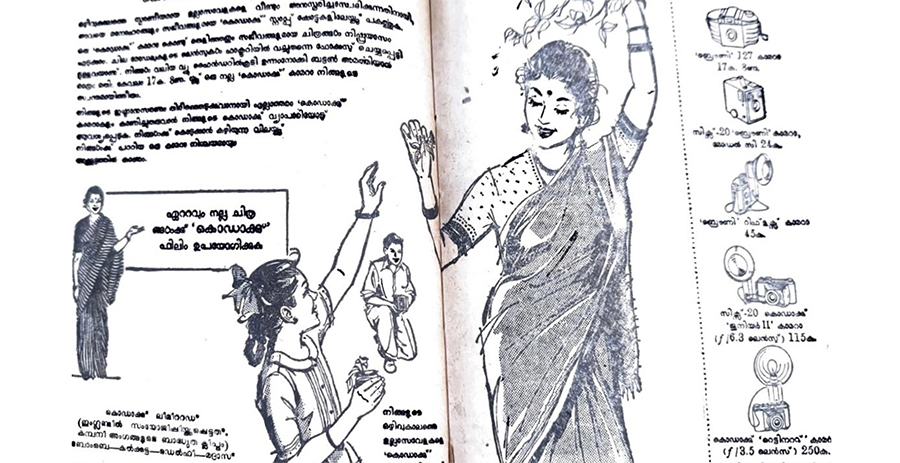
In another, where the Indian Kodak Girl provides step-by-step instructions through a speech bubble, she is addressing the mother who desires to photograph and preserve cherished moments with her child throughout the day. Most often, this pan-Indian iteration of the Kodak Girl never holds a camera herself but has her bangled hands pointing at the instructional text that guides her audience.
The Western Kodak Girl had always been part of the pictured landscape, as a participant and as a photographer within the frame. But the Indian Kodak Girl, in contrast, existed outside it. She merely posed as the mediator who enabled the photographic act within the private domain as a maternal, helper figure.
Overall, the imagery of the Indian Kodak Girl dovetailed with the dominant and increasingly homogenised ideas about the citizens of the newly-independent India and their gendered roles in the postcolonial landscape.
Kodak’s messaging also showed that the company was convinced that the domestic Indian consumer had to be educated about camera technology to create a viable market. While rooted in the colonial project of educating the local population in ‘superior’ Western technology, Kodak took care to disguise the exercise by cloaking it in Indian attire.
Simultaneously, the ads valorised the Western ideal of the nuclear family even though the notion of the nuclear family was not central to the early agendas of the First or Second Family Planning Commissions of 1951 and 56, respectively. While the nuclear family was not the normative ideal in 1950s India, it soon began to emerge within state-sponsored visual culture and public discourse as well, symbolising modernity, efficiency, and disciplined citizenship.
Kodak’s nuclear family imagery eventually folded into these broader narratives of Hindu middle-class respectability and the visual regime of a postcolonial nation in the making. The desire and need to photograph to make memories revolved completely around this idealised structure of family and home.
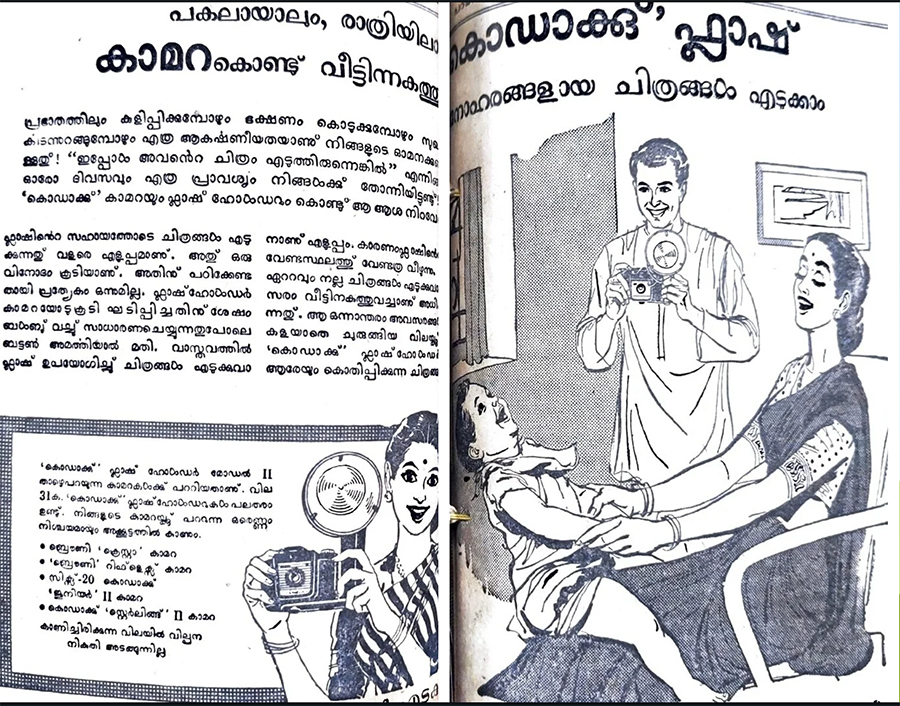
Regional diversity was mostly abandoned to favour dominant, pan-Indian imagery. In Mathrubhumi Weekly, the content of the ads was written in Malayalam to enhance readability and connect with the vernacular reading public but the accompanying images failed to reflect regional specificities. The Kodak lithographs differ markedly from the other, more localised advertising featured in the magazine, particularly those released by film studios. Such authentic regional advertising spotlighted local faces from the region and the Malayalam movie industry that were far more representative of South Indian culture and of Kerala, in particular.
Within this context, the figure of the Indian Kodak Girl tapped into the incomplete and evolving gendered imagination of the role of women in postcolonial India. In turn, this further cemented and reified the ways in which Indian women experienced being seen and how they saw themselves — modern but domestic; educated but non-threatening to familial and societal structures; knowledgeable but demure and so very mindful.
Dr Greeshma C P is a guest faculty member at the Centre for Comparative Literature, University of Hyderabad. Her doctoral research explores intersections of visual culture, modernity, and twentieth-century Kerala.
